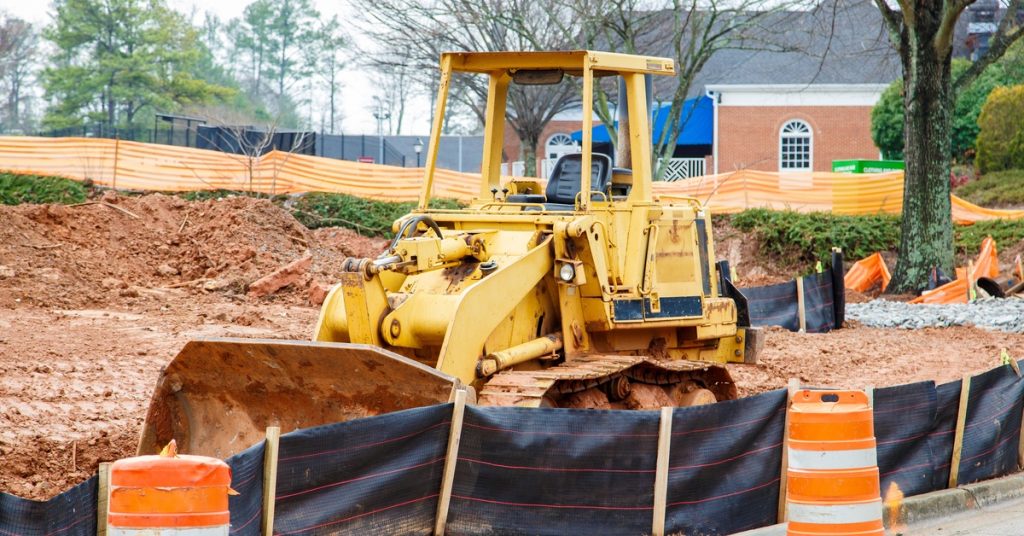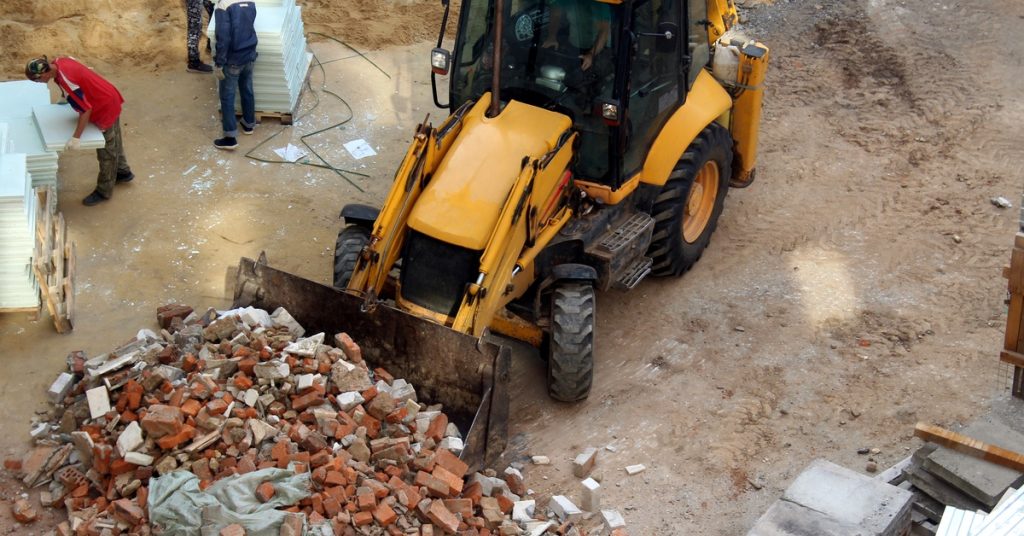Erosion and sediment control represents one of the most critical aspects of responsible construction management. When soil particles wash away from your site, they don’t just disappear. They end up in waterways, storm systems, and neighboring properties. The environmental impact may create lasting damage, while the regulatory consequences can derail your project and hurt your reputation.
Effective erosion and sediment control requires a comprehensive approach that combines proper planning, strategic implementation, and ongoing maintenance. The strategies we’ll explore can help you protect the environment while keeping your project on track and within budget.
Grade Slopes Properly
You can control water flow patterns by carefully managing the angle and direction of slopes across your project area. Water naturally follows the path of least resistance, and strategic grading guides it away from vulnerable areas.
Start by creating gentle slopes that slow water velocity rather than steep inclines that accelerate runoff. When you must work with steeper grades, consider terracing to break up long slopes into shorter segments.
Direct water flow toward stable, protected areas rather than letting it concentrate in channels that may quickly erode. Create broad, shallow drainage patterns that spread water across wider areas, reducing the erosive power of concentrated flow. This approach works particularly well when combined with temporary seeding or mulching to provide immediate surface protection.
Use Geotextiles
Geotextiles are an engineered solution for soil stabilization that works immediately upon installation. These synthetic fabrics allow water to pass through while holding soil particles in place, creating a stable foundation for vegetation growth and long-term erosion control.
Choose woven geotextiles for areas requiring maximum strength and soil separation, such as access roads and equipment staging areas. Nonwoven geotextiles work better for drainage applications and gentle slopes where filtration takes priority over strength. The fabric weight and permeability must match your specific soil conditions and expected water flow rates.
You should install geotextiles with proper overlap, and secure anchoring to prevent failure during heavy rain events. Overlap adjacent sections by at least 12 inches, and anchor the fabric every few feet using approved fasteners. Cover the installed geotextile with appropriate aggregate or topsoil to protect it from UV degradation and mechanical damage.
Put up a Retaining Wall
Retaining walls are a more permanent solution for steep slopes and areas where space limitations prevent gentler grading. These structures resist soil pressure while creating stable, usable areas for construction activities. The wall design must account for soil conditions, drainage requirements, and the loads it will support.
Consider segmental retaining walls for moderate heights and temporary applications. These interlocking concrete units install quickly and provide excellent drainage through their open-back design. For taller walls or permanent installations, cast-in-place concrete or engineered stone walls offer superior strength and longevity.
Install proper drainage behind retaining walls to prevent hydrostatic pressure buildup that can cause wall failure. Use drainage aggregate and perforated pipes to collect and redirect water away from the wall structure.
Consider Silt Fences

Silt fences create an effective temporary barrier against sediment transport while allowing water to flow through at controlled rates. Silt fences work best along the downhill perimeter of disturbed areas where sediment-laden runoff exits the site.
Install silt fences in shallow trenches to prevent water from flowing underneath the fabric. The trench should be at least six inches deep, with the fabric extending into the trench and backfilled with compacted soil. Drive the support posts deep enough to remain stable during storm events, typically 18 to 24 inches depending on the soil conditions.
You can maintain silt fences by removing accumulated sediment when it reaches one-third the fence height. Replace damaged sections immediately to maintain barrier effectiveness.
Add Sediment Traps
These engineered depressions collect runoff water and allow sediment to settle out before cleaner water continues downstream. Strategic placement of sediment traps protects sensitive areas and reduces the sediment load reaching storm drain systems.
Size sediment traps appropriately for the drainage area they serve. A trap that’s too small will overflow during heavy rain, while an oversized trap may not function efficiently during light rain events. Calculate the required storage volume based on local rainfall patterns and the contributing drainage area.
Line sediment traps with appropriate materials to prevent infiltration into groundwater in sensitive areas. Use compacted clay, synthetic liners, or other approved materials based on local regulations and site conditions. Install outlet structures that release water slowly and at nonerosive velocities.
Cover Storm Drains
Simple protective measures for erosion and sediment control can dramatically reduce your project’s impact on downstream water quality while helping you avoid regulatory violations.
Install storm drain covers or filters that allow water to pass while capturing sediment and debris. Choose products designed for construction sites that can handle higher sediment loads than standard urban runoff. Regularly inspect and clean these protective devices to maintain their effectiveness throughout the project duration.
Clean up After Projects

Post-construction cleanup extends beyond removing equipment and materials to include comprehensive site stabilization and sediment removal. This final phase ensures your project leaves no lasting environmental impact and meets all regulatory requirements for site closure.
Remove all temporary erosion control measures and accumulated sediment from the project area. Dispose of sediment-laden materials according to local regulations, which may classify them as contaminated waste depending on their composition. Construction power sweeping effectively removes fine particles and debris from paved surfaces, preventing them from washing into storm systems during future rain events.
Aim to restore all disturbed areas to stable conditions through appropriate grading, soil amendments, and vegetation establishment. This may require importing topsoil to replace material lost during construction or installing permanent erosion control features for long-term stability.
Keep up With Maintenance
Weather events, equipment traffic, and normal wear gradually reduce the effectiveness of control measures, making proactive maintenance essential for continued protection.
Inspect all erosion control features after each significant rainfall event. Look for signs of damage, sediment accumulation, or changes in water flow patterns that might indicate problems. Address issues immediately to prevent small problems from becoming major failures that could impact the entire site.
Schedule routine maintenance activities based on seasonal weather patterns and project phases. Increase inspection frequency during wet seasons when erosion risk is highest. Keep detailed maintenance records to demonstrate regulatory compliance and identify recurring issues that might require design modifications.
Effective erosion and sediment control requires thoughtful selection and implementation of strategies that match your specific site conditions and project requirements. The techniques outlined in this complete guide to erosion and sediment control can help you protect environmental resources while maintaining project efficiency and cost-effectiveness.

